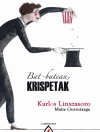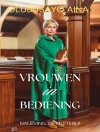In ‘The Royal Picture Alphabet, ‘ John Leighton crafts an exquisite visual and literary exploration of the alphabet, combining striking illustrations with poetic descriptions. Each letter is personified through rich imagery and historical references, allowing readers to traverse both the English language and its royal heritage. Leighton’s unique blend of whimsy and sophistication reflects the influences of 19th-century British literature, placing the work within the context of the Victorian era’s fascination with language and illustration. The book presents an innovative method of engaging young minds while also appealing to adults seeking nostalgia and aesthetic enjoyment. John Leighton was an accomplished artist and writer, known for his contributions to children’s literature and his passion for educational art. His background in both painting and literature likely inspired this ambitious project, where the interplay of words and images speaks to his understanding of how visual arts can enhance literary comprehension. Leighton’s experiences in design and narrative craftsmanship allow him to guide readers through an alphabet that is not merely a tool for learning but a celebration of culture and creativity. This enchanting work is highly recommended for educators, parents, and anyone devoted to fostering a love for language and art in the next generation. ‘The Royal Picture Alphabet’ serves as both a pedagogical resource and a delightful piece of art that encourages exploration of the written word while celebrating England’s rich artistic tradition.
A propos de l’auteur
John Leighton, a noteworthy figure in the Victorian era literary landscape, was an author primarily recognized for his unique contribution to children’s literature. His renowned work ‘The Royal Picture Alphabet’ serves as a testament to his innovative approach to pedagogy and his flair for combining visually appealing art with educational content. While Leighton’s oeuvre may not be extensive, ‘The Royal Picture Alphabet’ showcases his literary style, characterized by a blend of didacticism and ornamental design, catering to the dual purpose of entertainment and instruction. Although not as widely known as some of his contemporaries, Leighton’s work was instrumental in shaping the early format of illustrated educational books for youthful readers. His contribution to this genre signified a departure from the more somber and text-heavy books of the era, introducing children to a world where learning was intertwined with visually stimulating illustrations. John Leighton’s literary legacy, though perhaps modest in quantity, remains significant for its quality and innovation within the realm of 19th-century children’s educational literature.












